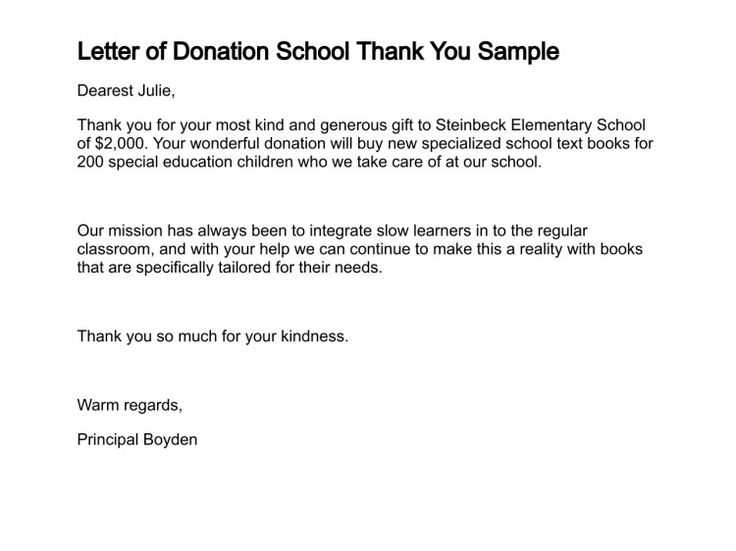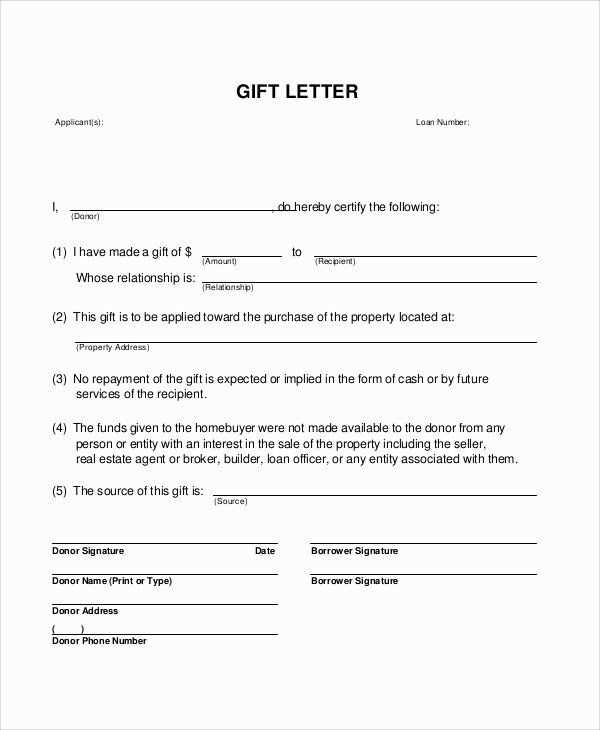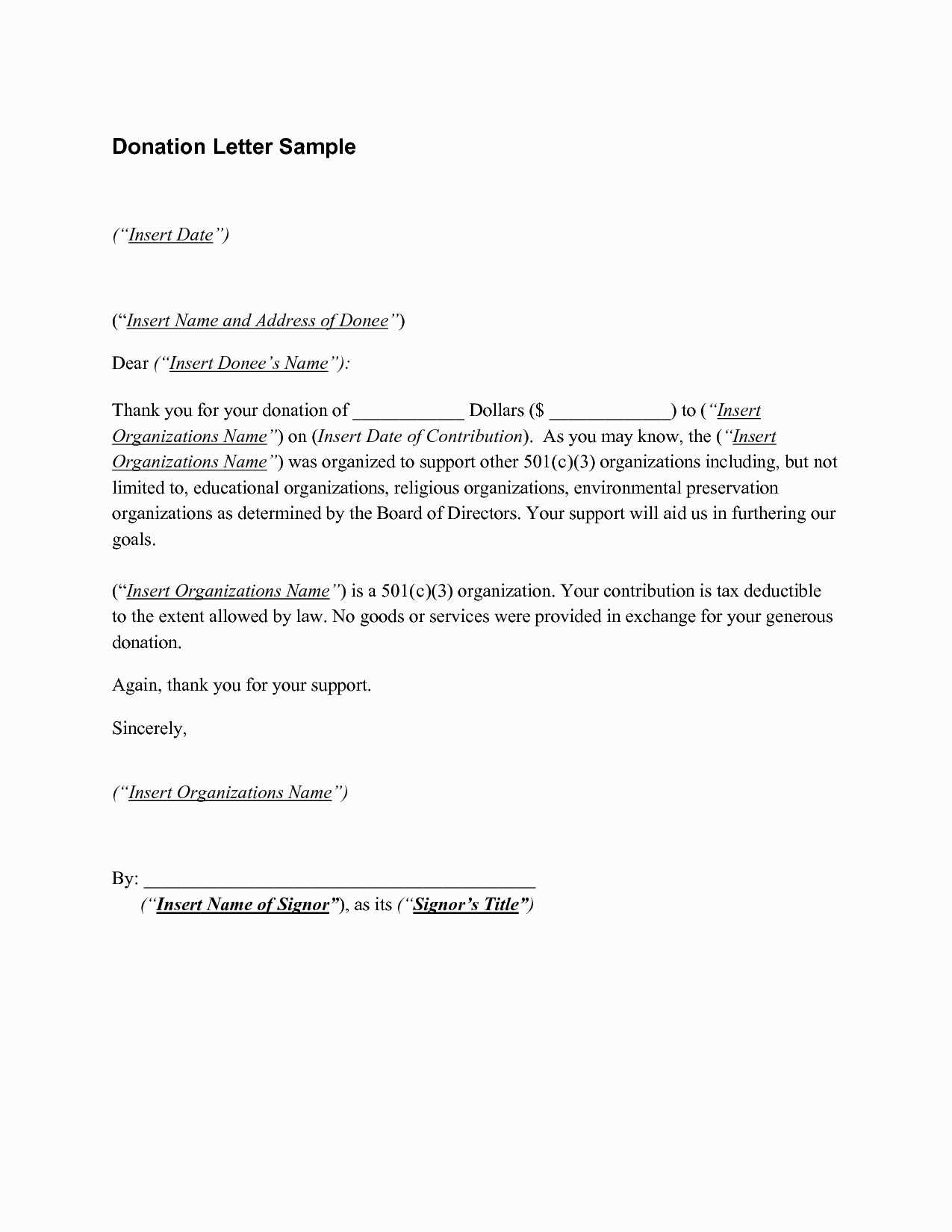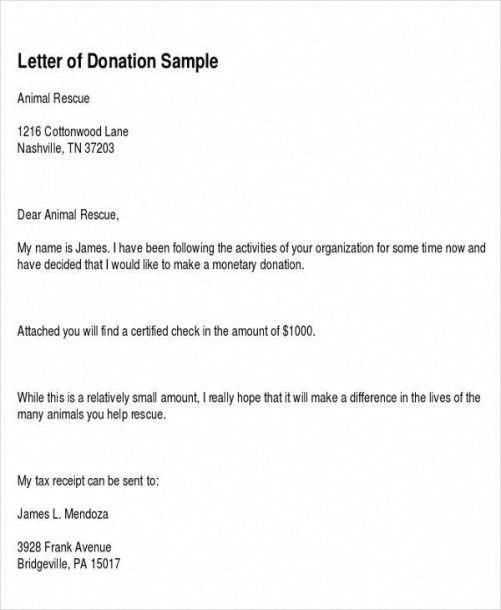Gift Donation Letter Template for Charitable Contributions

When supporting a cause or organization, expressing your intent clearly is essential for maintaining transparency and goodwill. Whether you are contributing to a charity or assisting someone in need, a well-composed communication can enhance the impact of your support. The right words can show your appreciation and encourage others to join in the effort as well.
Effective communication plays a vital role in these acts of kindness, helping recipients understand the nature of the support and the motivations behind it. Crafting a well-structured message not only conveys the necessary information but also fosters a sense of connection between you and the organization or individual you are assisting.
By following a simple framework, you can ensure your message is professional, clear, and heartfelt. This can also streamline the process of sending your support, making the entire experience easier and more impactful.
Understanding the Purpose of Donation Letters
In any charitable act, clear communication is key. When expressing support or making a contribution, it’s important to convey your intentions effectively. This not only ensures transparency but also strengthens the connection between the giver and the recipient. A formal note allows the giver to express their commitment and provide details about the contribution, ensuring that both parties are on the same page regarding the terms and expectations.
Such communications serve multiple purposes: they acknowledge the recipient’s needs, confirm the giver’s involvement, and outline any terms of the support. It also provides a formal record for both sides, offering documentation for future reference and organizational purposes.
| Purpose | Explanation |
|---|---|
| Clarification | Ensures both parties understand the nature and extent of the support provided. |
| Transparency | Provides clear terms of the contribution, fostering trust. |
| Documentation | Serves as a written record for future reference and compliance. |
| Appreciation | Allows the contributor to express their gratitude and reinforce their commitment. |
How to Create an Effective Template
To create a well-organized and impactful message, it’s important to structure the content in a clear and concise manner. A well-crafted format not only helps in delivering your intent but also ensures that all necessary details are included. The key is to maintain a balance between formality and warmth, as your words should reflect both professionalism and sincerity.
Key Elements to Include

Every effective communication should contain certain essential components. Start with a polite opening that expresses your intention clearly. Then, move on to specifics about your involvement, including the amount, timing, or nature of your support. End with a note of gratitude and an invitation for further communication, ensuring that the recipient feels valued.
Maintain Clarity and Simplicity
Keeping your message simple and direct helps avoid confusion. Avoid using complex language or unnecessary details that might obscure the main points. An effective structure, with a logical flow, ensures that the recipient easily understands the purpose of your message without any ambiguity.
Key Details to Include in Your Letter

When composing a formal message for a contribution, it’s important to cover all the necessary aspects that provide clarity and detail. Each section should serve a specific purpose, ensuring that the recipient fully understands the nature of the communication and the intent behind it. A clear, organized structure will help foster trust and ensure transparency between both parties.
Introduction and Purpose: Start by introducing yourself and clearly stating the purpose of your communication. Mention the reason for your involvement and why you are offering your support.
Specific Details: Include relevant information about the support, such as the type of assistance being provided, the amount or value, and any conditions or terms that apply. This helps the recipient understand the specifics of your contribution and prevents any misunderstandings.
Closing Remarks: End with a note of appreciation for the recipient’s work or cause. Express your willingness to continue supporting and offer further assistance if necessary. This ensures a positive, ongoing relationship.
Customizing Your Message for Impact
To create a lasting impression, it’s crucial to personalize your communication. Tailoring your message to reflect the recipient’s unique needs and values helps ensure that your words resonate more deeply. A customized message not only highlights your sincerity but also shows that you’ve taken the time to understand and address the recipient’s specific situation.
Focus on making your tone warm and genuine, ensuring that your words align with the purpose of the contribution. Incorporate personal details or shared experiences that demonstrate your connection to the cause or recipient, which will make the message feel more authentic and impactful.
Legal Guidelines for Donation Correspondence
When drafting formal communications related to contributions, it’s essential to be mindful of legal considerations. Ensuring compliance with applicable laws helps protect both the contributor and the recipient, preventing any potential issues or misunderstandings. Proper documentation can also support the integrity of the transaction and serve as a reference for future dealings.
Key Legal Considerations
- Tax Implications: Make sure to include necessary information for tax purposes, such as the estimated value of the contribution and the organization’s tax-exempt status, if applicable.
- Record Keeping: Always retain a copy of your communication for both personal records and potential audits.
- Transparency: Be clear about the purpose and nature of the support to avoid any potential confusion regarding your contribution.
Regulatory Compliance
- Jurisdictional Guidelines: Different regions or countries may have specific rules governing contributions and related correspondence. Ensure compliance with local regulations.
- Donor Privacy: Respect the privacy of all parties involved and adhere to data protection laws when sharing personal or financial information.
Common Mistakes to Avoid in Letters
When composing a formal communication for a contribution, it’s important to avoid common pitfalls that could detract from the professionalism or clarity of your message. Mistakes in tone, structure, or content can lead to misunderstandings or create an unprofessional impression. Being aware of these errors ensures that your message has the desired impact and maintains the integrity of your communication.
Inadequate Clarity and Detail

Vague language: One of the most frequent mistakes is not providing enough detail about the contribution. It’s essential to be specific about what you are offering, how much, and the intended impact. Without this information, the recipient may be unsure about the terms or the value of the support.
Failure to Personalize
Generic content: Sending a generic message that doesn’t address the recipient’s unique situation can make your communication seem impersonal. Tailor your words to reflect your connection to the cause or individual, and avoid using cookie-cutter phrases that lack emotional resonance.
Excessive Length
Overcomplicated messages: While it’s important to be thorough, overly long or convoluted communications can be difficult to read and may dilute your message. Keep it concise and to the point, ensuring that your key points are easily accessible to the recipient.